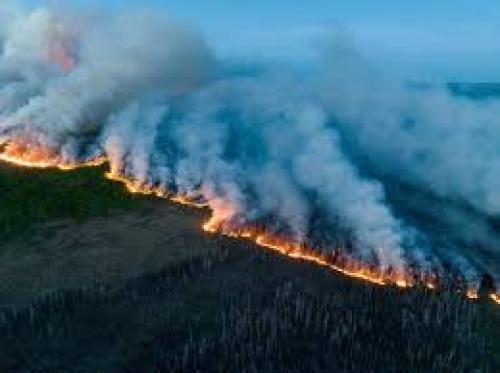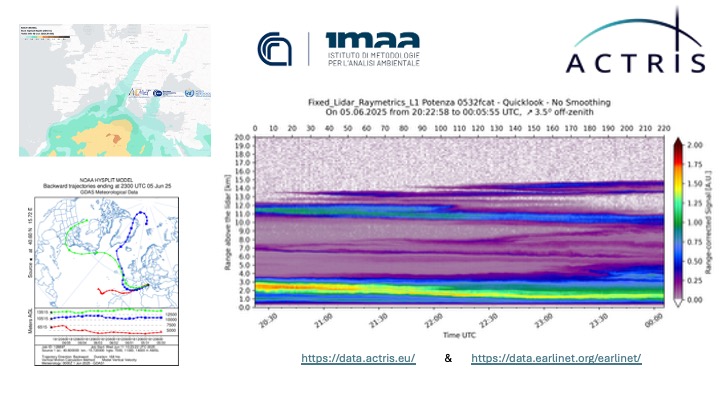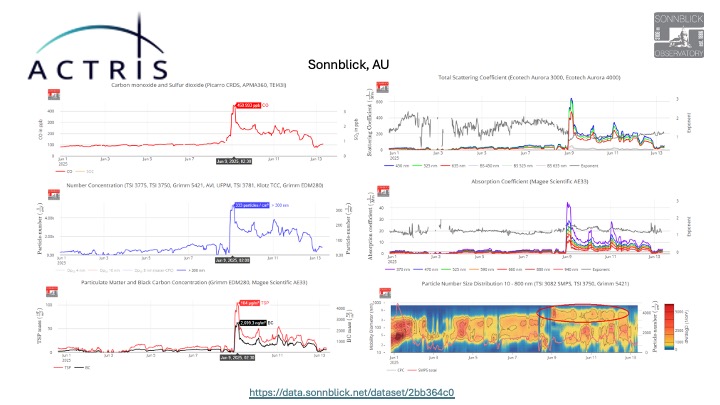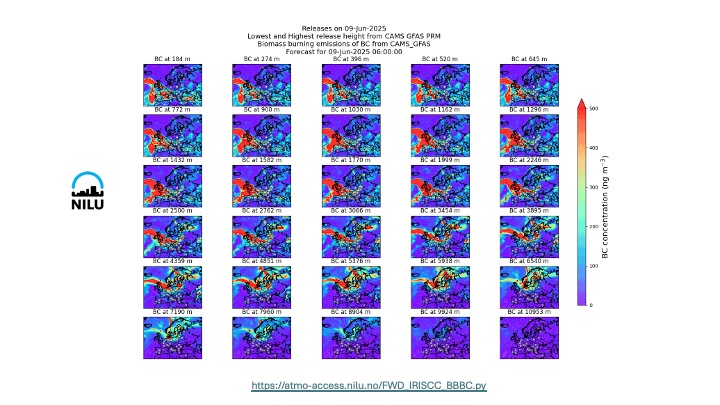National Facilities


Since May 2025, wildfires occurring in Canada have emitted a humongous amount of atmospheric particles, some of which flew over the Atlantic Ocean and eventually reached the Old Continent in June.
Several newspapers and websites reported the observation of those plumes. Indeed, sky pictures showed foggy air and red-turned sunset, typical indicators of biomass burning (BB) particles. Through a dense network of continuous observations, ACTRIS data allow for characterising and quantifying such contribution. Biomass burning aerosols were observed in the atmospheric column from Western Europe to Central Europe and the Mediterranean sites since June 5. For instance, ACTRIS aerosol lidar measurements collected in Potenza – Italy (Fig.1) showed the arrival of the plume at very high altitudes (10-14 km) while lower altitudes were mostly affected by desert dust intrusion from Northern Africa.

In the following days, the particles also reached ground level. Some clues about the arrival of BB particles at the ground are collected from ACTRIS aerosol in situ sites from France to Czech Republic. Highly distinct and clear evidence of the arrival of the Canadian plume at the surface was collected at high altitude in situ sites such as in Sonnblick - Austria, which reported a significant increase of particle number concentration, black carbon and signatures in aerosol backscatter coefficient at different wavelengths (Fig.2).

These measurements are complementary to a dedicated aerosol modelling tool provided by NILU (Fig.3), which has been made available for Europe, particularly for ACTRIS sites, to investigate these wildfire plumes.













